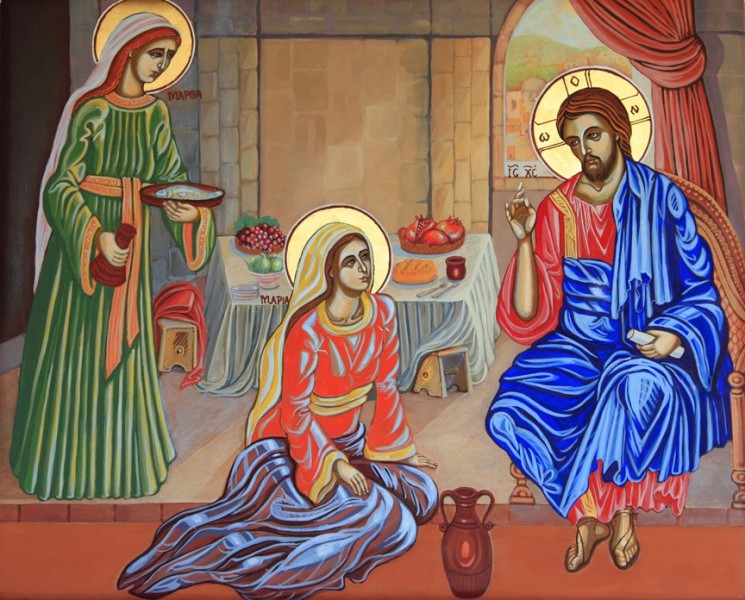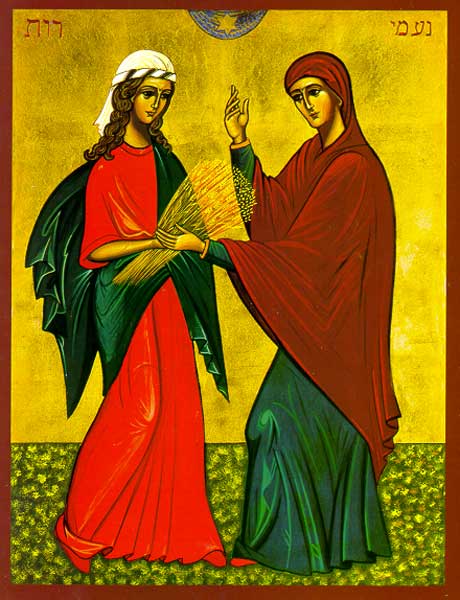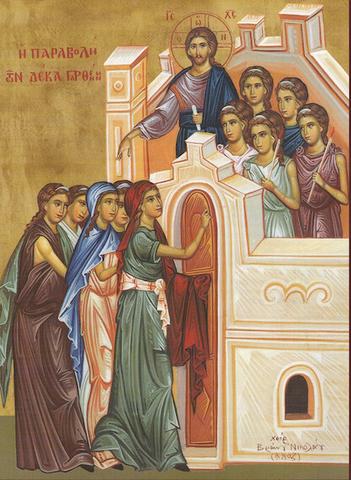
The Lenten period is a time of focused preparation. Its clearest function is to prepare us for the Passion of our Lord Jesus Christ. Everything that Lent puts before us, in the form of church services, fasting discipline, prayers, and confession of sin, ultimately serves that purpose. That is because the suffering and death of the One who created and loves the world is not only the most significant event in all of history, it is also disturbing, puzzling, and awe-inspiring. Each year, we are called to look inward, and take action through our bodies, minds, and hearts.
One of the ways that Great Lent and Holy Week invite us to take stock of ourselves, and of the whole human journey, is through the scripture readings the Church puts before us each day. There is a lot to get through, but if we are able to devote the time, it is a significant part of the Lenten road.
Among the many riches given us through the Lenten scripture readings, this year I was struck by the importance given to women. I got that generalized impression in the readings from Proverbs. That book isn’t always the most enthralling to me. To be frank, some of its sayings can sound banal. And some adages—more than I’d like—speak about the horrors of “a loose woman” and how she can entice a good man to perdition, and how ruinous is her gossip. But then, remarkably, the entire book of Proverbs closes with a full 21 verses that enumerate the qualities of a great woman. Singled out for praise are: her work with textiles, her management of the household, her business initiatives, her generosity to the poor, her delight in her husband, her physical strength, her wisdom, and her kindness. As refreshing as it is to see the diversity of virtues, many of which reach outside feminine stereotypes, both this praise of women and even the somewhat primitive caution against loose women leave us with the sense that women are immensely influential in the course of human life.
That observation rings loud and clear during Holy Week, where the importance of women is undeniable, and the stakes couldn’t be higher. It’s women, more than men, who are seen to understand and act on Jesus’s identity and his work. I’ve always found it touching that the gospels, written by the disciples themselves, don’t hold back in reporting how the apostles keep getting it wrong. Jesus announces to them that he is going to Jerusalem to be killed and to rise, and they ask if they can sit on his right and left. Peter promises fidelity and then denies even knowing Jesus. Mark runs away from Gethsemane naked, the centurion grasping his clothing.


As for the women, we consider the wise virgins of the parable, who have had the insight and wisdom to prepare for the coming of Christ, the Bridegroom. True, there are foolish virgins as well, but the choice of highlighting women as the indicators of preparedness, and as examples to consider, is surely significant. We saw that as well with Martha and Mary, and in St John’s gospel each of them is given a moment to shine out as examples of being present to Jesus and hearing his words. And then there is the “sinful woman.” While the Book of Proverbs condemned "loose women," Christ reveals the inner light in every “sinful woman” he meets: the Samaritan, the Canaanite, the woman with the flow of blood, the woman caught in adultery. As for the woman who wipes his feet with costly ointment, whom we celebrate during Holy Week, she is singled out by Our Lord as the only one who understood what was actually going on. And the astounding hymn, composed by the nun Kassia, sung on Holy Wednesday highlights her as a prophet. She perceives Christ’s divinity, and in so doing joins the ranks of the myrrh-bearing women. (How significant that it is a “rank,” as my daughter pointed out yesterday.) She recognizes Jesus as the very one who created the world. And she recognizes the depth of her own sin. She truly sees.
As for the apostles, they would eventually become the great preachers, teachers, and healers, who would proclaim the true faith to the whole world. But at this stage, they are still clueless, and the one who gets it is the woman who is prostrate before Christ her Lord. Our every prostration is but an imitation of her posture before the feet of Christ. As Lent and Holy Week bring us to a state of increasing preparedness, women are among the main people showing us the way.
The “Kassiani” Hymn
The woman had fallen into many sins, O Lord,
yet, when she perceived Your divinity,
she joined the ranks of the myrrh-bearing women.
In tears she brought You myrrh before Your burial.
She cried: “Woe is me!
For I live in the night of licentiousness,
shrouded in the dark and moonless love of sin.
But accept the fountain of my tears,
O You, Who gathered the waters of the sea into clouds!
Bow down Your ear to the sighing of my heart,
O You, Who bowed the heavens in Your ineffable condescension!
Once Eve heard Your footsteps in Paradise in the cool of the day,
and in fear she ran and hid herself.
But now I will tenderly embrace those pure feet
and wipe them with the hair of my head.
Who can measure the multitude of my sins,
or the depth of Your judgments, O Savior of my soul?
Do not despise Your servant in Your immeasurable mercy!”

Peter Bouteneff teaches theology at St. Vladimir's Seminary.


